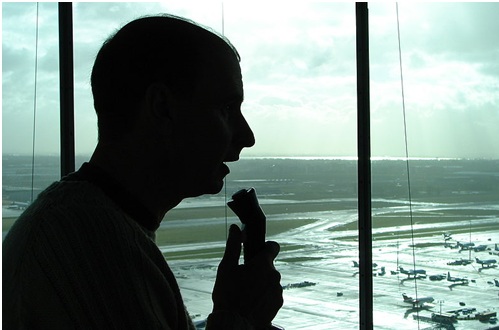

What does it take to be
an air traffic controller?
Air traffic control is an extremely demanding occupation which requires much dedication and attention to detail. A good candidate for air traffic control should be well organized, quick with numeric computations, have assertive and firm decision making skills, have an excellent short term memory and an above average degree of situational awareness. Air traffic controllers must also have excellent hearing and speaking skills and be able to undergo rigid physical and psychological testing. One must be calm under pressure and be in peak physical condition: conditions such as diabetes, epilepsy and heart disease are disqualifying as is the use of a number of FDA approved drugs.
Civilian Air Traffic
Controller licensing is standardized internationally through the
International Civil Aviation
Organization (ICAO).
Most countries have schools dedicated to ATC, whether they be private
or operated by the provider of ATC within the country (ex: the FAA).
The goal of such ATC programs are to train students on the standards
required to hold an ATC license which contains several "Ratings".
The five ratings as defined by ICAO are Area (procedural), Area
Radar, Approach (procedural), Approach Radar and Aerodrome.
US controllers may train in similar specialties such as Tower,
Ground-Controlled Approach (GCA), Terminal Radar Control, or En Route
Control (radar or non-radar); this can take between 6 months and several
years.
Once a controller is placed in a new unit or starts work on a new sector, a period of training must be undergone regardless of proficiency or previous work; this ensures the controller is familiar with the procedures specific to the unit or sector. This type of training is typically OJT and usually varies from months to years depending on the sector.
Once all educational and training requirements are met, a controller is allowed to control on their possessions.
Facilities equipped to teach and certify Air Traffic Controllers include but are not limited to:
Embry-Riddle Aeronautical University
University of Alaska Anchorage
The Metropolitan State College of Denver
Florida Community College at Jacksonville
Minneapolis Community & Technical College
The Community College of Baltimore County
Vaughn College of Aeronautics and Technology
Community College of Beaver County
Middle Tennessee State University
Link Simulation & Training Air Traffic Control Academy
Work Patterns,
Age Restrictions, and Stress
Because of the nature of Air Traffic Control, there are age restrictions in place for employment with the FAA. The maximum age to begin training (unless previously an air traffic controller in the military) is 30 and the mandatory retirement age is 56. NATS carries a minimum age to start application and training of 18 years and a mandatory retirement age of 60.
Work patterns are set to ensure minimal fatigue on controllers and thus to allow maximum performance. Usually, a controller will work for 90 to 120 minutes before taking a 30 minute break. Because ATC is a 24/7 job, controllers work rotating shifts which include nights, weekends and public holidays. A shift will be set around 28 days in advance and the structure of controllers' shift patterns is regulated to allow for adequate time off. In the UK for example, a controller will work two mornings, two late afternoons, and 2 evenings/nights followed by four consecutive days off.
Stress is the main reason such regulations and restrictions are set; research has shown that a controller is most effective when they work no more than 2 hours without a break. After two hours on post performance begins to deteriorate rapidly. Because of this, there are strict regulations governing shift length, number of night shifts worked consecutively, and length of time off between shifts.